Odiya Language

 Language
LanguageThe language Odiya or Oriya as it was called till recently belongs to the Indo-Aryan branch of the Indo-European language family. Odiya, Bengali, Assamese and Maithili all come from the same Eastern Magadhi Apabhramsa. Odiya has its origins pinned to the 10th century. In the 16th and 17th century, as in the case of other Indian languages, Odiya too suffered changes due to the influence of Sanskrit.
However, during the 17th and 18th centuries a new line of approach emerged. Other languages belonging to the Aryan and Dravidian families, spoken in the neighbouring regions and those of the tribal groups, had a great influence over Odiya that resulted in many linguistic variations in the language such as Baleswari, Bhatri, Laria, Sambalpuri, Ganjami, Chhatisgarhi and Medinipuri in various parts of the State and the surrounding regions.
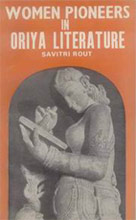 The hilly regions of north and south
Odisha have their own local versions of Odiya with many linguistic peculiarities. It is one of the
22 languages recognized by the Indian Constitution. The Odiya script actually descended from
the Brahmi script. However it took a Dravidian approach, probably during the reign of the Ganga
kings. It holds the credit of being the only language that has been the least influenced by Persian
and Arabic amongst all the languages spoken in eastern India.Though Odiya is mainly spoken in the state of Odisha, Odiya speaking people live in Midnapore district of West Bengal, Seraikela Kharsawan district of Jharkhand, Srikakulam district of Andhra Pradesh and Bastar district of Chatisgarh province. It is estimated that about 31 million people speak Odiya in total.
The hilly regions of north and south
Odisha have their own local versions of Odiya with many linguistic peculiarities. It is one of the
22 languages recognized by the Indian Constitution. The Odiya script actually descended from
the Brahmi script. However it took a Dravidian approach, probably during the reign of the Ganga
kings. It holds the credit of being the only language that has been the least influenced by Persian
and Arabic amongst all the languages spoken in eastern India.Though Odiya is mainly spoken in the state of Odisha, Odiya speaking people live in Midnapore district of West Bengal, Seraikela Kharsawan district of Jharkhand, Srikakulam district of Andhra Pradesh and Bastar district of Chatisgarh province. It is estimated that about 31 million people speak Odiya in total.
 Odiya Literature
Odiya LiteratureThe Odiya Literature can be classified into five parts viz. Old Odiya (10th century-1300), Early Middle Odiya (1300-1500), Middle Odiya (1500-1700), Late Middle Odiya (1700-1850) and Modern Odiya (1850 till present day). Odiya literature is a mish-mash of ups and downs from it ancient glory to slumping down into almost non-entity.The earliest use of prose can be found in the Madala Panji or the Palm-leaf Chronicles of the Jagannatha temple at Puri, which date back to the 12th century. Sarala-dasa (Sidheswar Panda) of the 14th century was the first great poet of Odiya, who adapted the classic Mahabharata into simple Odiya and wrote the Chandi Purana and the Vilanka mayana in praise of goddess Durga. Arjuna-dasa wrote the first long Odiya poem called Rama-bibha. The Odiya literature was distinctly religious in nature up to 1500 AD. Odiya literature upto 1500 AD mainly covers poems and proses with religion, gods and goddesses as the main theme.
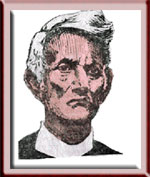 The next era, more commonly called the Jagannatha Dasa Period, stretches till the 1700
AD and was markedly influenced by the Vaishnava movement, which the compositions of Shri
Chaitanya emphasized on. His works brought in a new evolution in Odiya literature. Balarama
Dasa, Jagannatha Dasa, Yasovanta, Ananta and Acyutananda were the main exponents who have
made a substantial contribution to religious literature in Odiya. Balarama Das (author of odiya
Ramayana and Mahabharata), Jaganath Das (Bhagawata Purana) and Ananta Das, Yesowanta
Das and Achutananda Das mainly emphasised on translation and adaptation of Sanskrit texts. A
few prominent works of this period include the Usabhilasa of Sisu Sankara Dasa, the Rahasya-
manjari of Deva-durlabha Dasa and the Rukmini-bibha of Kartikka Dasa.
The next era, more commonly called the Jagannatha Dasa Period, stretches till the 1700
AD and was markedly influenced by the Vaishnava movement, which the compositions of Shri
Chaitanya emphasized on. His works brought in a new evolution in Odiya literature. Balarama
Dasa, Jagannatha Dasa, Yasovanta, Ananta and Acyutananda were the main exponents who have
made a substantial contribution to religious literature in Odiya. Balarama Das (author of odiya
Ramayana and Mahabharata), Jaganath Das (Bhagawata Purana) and Ananta Das, Yesowanta
Das and Achutananda Das mainly emphasised on translation and adaptation of Sanskrit texts. A
few prominent works of this period include the Usabhilasa of Sisu Sankara Dasa, the Rahasya-
manjari of Deva-durlabha Dasa and the Rukmini-bibha of Kartikka Dasa. During the commencement of the 17th century a new variety of novels in verse also had evolved, Haravali of Ramachandra Pattanayaka set the trend for the emergence of a new form of novel in verse and is still beyond compare. Other poets like Madhusudana, Bhima, Dhivara, Sadasiva and Sisu Isvara-dasa composed another form came to be called Kavyas (long poems) based on Puranic themes in plain and simple Odiya. However, from the turn of the 18th century, the language became more complex and the usage of words more tricky with verbal jugglery.
The leading poets of the Vaishnava poetry were Upendra Bhanja Das (1670-1720), Baladeva Rath (1779-1845), Devi Krishna Das, Bhakta Charan Das, Abhimanyu, Samanta Sinhar, Bhima-Bhoi (1855-1895), Arakshita Dasa and Gopal Krushna. Upendra Bhanja Das's Kavyas were masterpieces. His Lavanyavati stands as a typical example of such Kavyas. Upendra was conferred with the title `Kabi Samrat` of Odiya literature for his aesthetic poetic sense and verbal management. Baldev's Campu and Baladeva Rath`s Campu are inimitable illustrations of Odiya musical drama. Prose and literature relating to religious festivals and rituals were also produced in large numbers during this period.
Samar Tarang by Brij Natha Badjena (1730-1800) is the only historical poem in Odiya literature. Samar Tarang and Catura Vinoda, a humorous prose work, were departures from the literary practices that were in vogue. As in the case of other Indian languages, Christian missionaries have shared their part in the development of Odiya literature too. The casting of the first Odiya printing typeset in 1836 by them is another milestone in the history of Odiya literature.
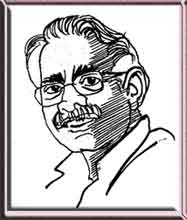 Rai Bahadur Radhanatha Ray (1849-1908), Madhusudana Rao (1853-1912) and
Phakiramohana Senapati (1843-1918) were three great poets who brought in a modern outlook
and spirit into Odiya literature in the middle of the 19th century. Radhanath Ray's is known
for his Cilika written in blank verse. Cilika and his other work Mahayatra reveal the influence
of the Italian poet Dante Alighieri and the English poet John Milton. Sachi Kanta Rauta Ray,
Godavarisa Mahapatra, Dr Mayadhara Manasimha, Nityananda Mahapatra, Kunjabihari Dasa,
Prabhasa Chandra Satpati, Radhanath, Kalindi Charan Panigrahi (Matira Manisha), Mayadhar
Mansinha and Gopinath Mohanty (Amritara Santan) are some of the Modern Odiya poets.
Sitakant Mohapatra, contemporary writer is a winner of the Jnanpith Award.
Rai Bahadur Radhanatha Ray (1849-1908), Madhusudana Rao (1853-1912) and
Phakiramohana Senapati (1843-1918) were three great poets who brought in a modern outlook
and spirit into Odiya literature in the middle of the 19th century. Radhanath Ray's is known
for his Cilika written in blank verse. Cilika and his other work Mahayatra reveal the influence
of the Italian poet Dante Alighieri and the English poet John Milton. Sachi Kanta Rauta Ray,
Godavarisa Mahapatra, Dr Mayadhara Manasimha, Nityananda Mahapatra, Kunjabihari Dasa,
Prabhasa Chandra Satpati, Radhanath, Kalindi Charan Panigrahi (Matira Manisha), Mayadhar
Mansinha and Gopinath Mohanty (Amritara Santan) are some of the Modern Odiya poets.
Sitakant Mohapatra, contemporary writer is a winner of the Jnanpith Award.
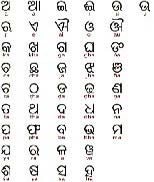 The modern Odiya prose was really born in the British period. The Ramayana and
Mahabharata were translated into Odiya by the famous poet Fakir Mohan Senapathi (1843-1918).
His novel Chaman Atha Gunta deplores the exploitation of village folks by the zamindari
system. Rama Sankara Ray's Kanci-Kaveri (1880) led to the birth of modern drama in Odiya. In
the last three and half decades of 19th century a number of newspapers were published in Odiya.
Utkal Deepika, Utkal Patra, Utkal Hiteisini from Cuttack, Utkal Darpan, Sambada Vahika from
Balasore and, Sambalpur Hiteisini from Deogarh are to name a few. The purpose of launching
these newspapers was to instill a determination in the minds of the people of Odisha to safeguard
the right of freedom of expression and to fight for the freedom of the country from the British
oppression. However, in their endeavor to achieve the above purpose they indirectly did a great
service to the development of modern Odiya literature.
The modern Odiya prose was really born in the British period. The Ramayana and
Mahabharata were translated into Odiya by the famous poet Fakir Mohan Senapathi (1843-1918).
His novel Chaman Atha Gunta deplores the exploitation of village folks by the zamindari
system. Rama Sankara Ray's Kanci-Kaveri (1880) led to the birth of modern drama in Odiya. In
the last three and half decades of 19th century a number of newspapers were published in Odiya.
Utkal Deepika, Utkal Patra, Utkal Hiteisini from Cuttack, Utkal Darpan, Sambada Vahika from
Balasore and, Sambalpur Hiteisini from Deogarh are to name a few. The purpose of launching
these newspapers was to instill a determination in the minds of the people of Odisha to safeguard
the right of freedom of expression and to fight for the freedom of the country from the British
oppression. However, in their endeavor to achieve the above purpose they indirectly did a great
service to the development of modern Odiya literature.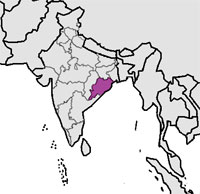 Nanda-Kisora Bala, Gopala Chandra Praharaja, Gangadhara Mehera, Chintamani Mahanti and Kuntala-Kumari Sabat Utkala-bharati, Niladri Dasa and Gopabandhu Dasa were the notable Odiya writers of the 20th century. The famous novelists were Umesa Sarakara,
Divyasimha Panigrahi, Gopala Praharaja and Kalindi Charana Panigrahi. Professor Girija
Shankar Ray, Pandit Vinayaka Misra, Professor Gauri Kumara Brahma, Jagabandhu Simha and
Hare Krushna Mahatab were the renowned writers in the fields of criticism, essay and history.
Ramashankara Ray and his brother Gaurisankara Ray were pioneers in drama, fiction and
journalism. In 1975 Sucharita, a women's magazine was started which paved way for the odiya
women writers to have a foothold in the literary world.
Nanda-Kisora Bala, Gopala Chandra Praharaja, Gangadhara Mehera, Chintamani Mahanti and Kuntala-Kumari Sabat Utkala-bharati, Niladri Dasa and Gopabandhu Dasa were the notable Odiya writers of the 20th century. The famous novelists were Umesa Sarakara,
Divyasimha Panigrahi, Gopala Praharaja and Kalindi Charana Panigrahi. Professor Girija
Shankar Ray, Pandit Vinayaka Misra, Professor Gauri Kumara Brahma, Jagabandhu Simha and
Hare Krushna Mahatab were the renowned writers in the fields of criticism, essay and history.
Ramashankara Ray and his brother Gaurisankara Ray were pioneers in drama, fiction and
journalism. In 1975 Sucharita, a women's magazine was started which paved way for the odiya
women writers to have a foothold in the literary world.
Jayanti Ratha, Susmita Bagchi, Paramita Satpathy, Hiranmayee Mishra, Chirashree Indra Singh Supriya Panda, Gayatri Saraf, Mamata Chowdhury are a few women fiction writers in this period in Odiya literature. Odiya literature exposes the industrious, peaceful and artistic image of the Odiya people who have offered much to the Indian civilization in the field of art and literature.


